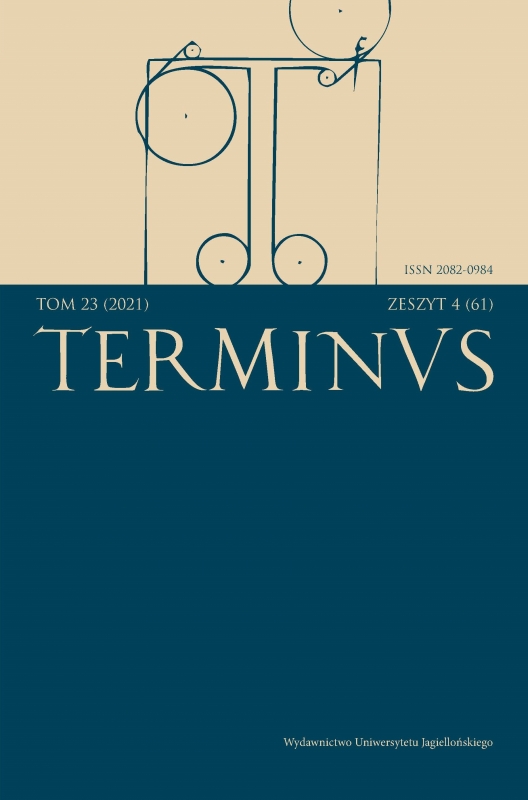„Żywot pięcioraki” i „śmierć pięcioraka”. Nota w sprawie źródła pogrzebowego kazania (Wilno 1620/1621) Melecjusza Smotryckiego
“Quintuple Live” and “Quintuple Death”: A Note on the Source of the Funeral Oration (Vilnius 1620/1621) by Meletij Smotryc’kyj
Author(s): Margarita A. KorzoSubject(s): Studies of Literature, 16th Century, 17th Century
Published by: Wydawnictwo Uniwersytetu Jagiellońskiego
Keywords: Meletij Smotryc’kyj; Orthodox funeral oration; Leontij Karpovyč; Philippe Bosquier; Catholic influences; religious literature
Summary/Abstract: In his polemic treatise Antapologija abo Apologijej … zniesienie written in the early 1630s, Socinian Eustachy Kisiel (nicknamed Gelasius Diplic) made an accusation that former Orthodox, now a Uniate priest, religious writer and Ruthenian linguist Meletij Smotryc’kyj (ca. 1577–1633) used a Latin work by a certain Dominican to compose a funeral oration on the death of Smotryc’kyj’s predecessor at the Brotherhood the Holy Spirit Monastery, Leontij Karpovyč(1580–1620). Kisiel’s allegations were noted in 1908 by the philologist Sergej Maslov, but later this topic did not attract the attention of researchers of Smotryc’kyj’s legacy. This study is an attempt to examine the hypothesis put forward by Kisiel and to find out what specific writing (or writings?) Smotryc’kyj could have used when composing the funeral oration. The oration on the death of Karpovyčwas published twice in Vilnius: 1620 – in a Ruthenian language version, and 1621 – in Polish. As the main storyline Meletij uses the topos of five varieties of live and the corresponding five varieties of death, which were very common in religious literature in the Middle Ages and Early Modern times. This topos is used by Smotryc’kyj to describe Leontij Karpovyč’s life path and to glorify his achievements in the spiritual field. The article considers the main contexts of the use of topos triplex, quadruplex and quintuplex mors (triple, quadruple, quintuple death) and triplex, quadruplex and quintuplex vita (triple, quadruple, quintuple life) in different confessional traditions up to the 1620s. On the basis of textual analysis, it is concluded that the main source for Meletij war Orbis terror, seu concionum de finibus bonorum et malorum libri duo written by Walloon preacher, Franciscan writer Philippe Bosquier (1561/1562–1636) (editio princeps Douai 1603). Orbis terror enjoyed large popularity in Europe, and was one of the recommended books for the Jesuit colleges of that time. For the funeral sermon Smotryc’kyj borrows only a small fragment of the first section (concio) of Orbis terror, and uses different editing techniques: a literal or close to the original translation; expansion or contraction of borrowed fragments; giving prominence to different elements of the text. Bosquier’s work became the main source for the funeral sermon, but by no means the only one: some images and amplifications used by Meletij testify to his good acquaintance with the Renaissance and Early Modern literature.
Journal: TERMINUS
- Issue Year: 23/2021
- Issue No: 4 (61)
- Page Range: 419-434
- Page Count: 16
- Language: Polish

